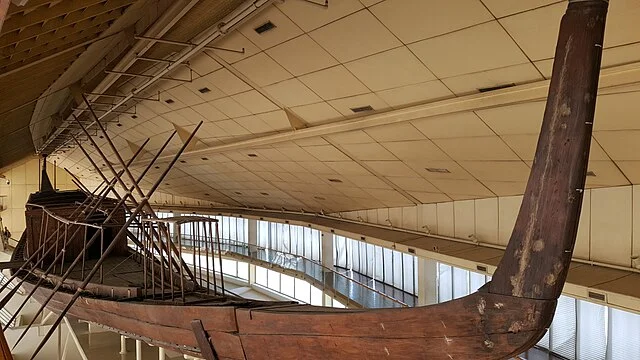The Khufu ship is one of the most significant discoveries in ancient Egyptian archaeology. Dating back to around 2500 BC, it was discovered in 1954 in a sealed pit at the base of the Great Pyramid of Giza. This well-preserved vessel provides valuable insights into ancient Egyptian craftsmanship, religious beliefs, and the importance of boats in their culture.
Get your dose of History via Email
Discovery and Excavation
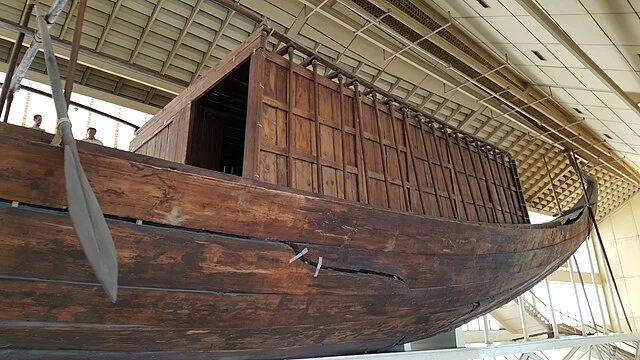
In 1954, Egyptian archaeologist Kamal el-Mallakh uncovered the Khufu ship in a pit near the southern side of the Great Pyramid. The ship was carefully disassembled into over 1,200 pieces and stored in a sealed, airtight chamber for over 4,500 years. The wooden components were in excellent condition, likely due to the dry desert environment and careful construction of the chamber.
The ship was meticulously reconstructed over a period of several years, a process overseen by Ahmed Youssef Moustafa, a leading boat restorer. Today, the fully reconstructed ship is displayed in a museum built near the discovery site at Giza.
Construction and Design
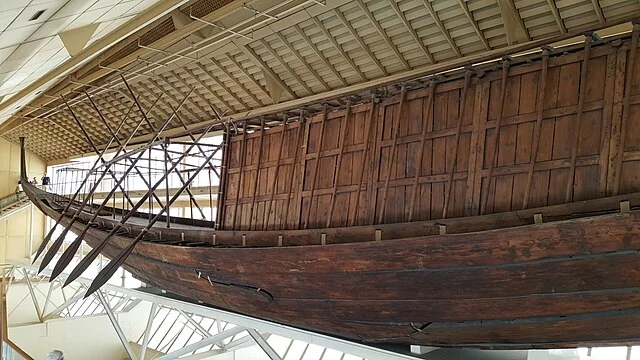
The Khufu ship is 143 feet long and 19.6 feet wide. It is made primarily of Lebanon cedar wood, a high-quality material often used by the ancient Egyptians for boat building. The ship’s design follows the traditional Egyptian papyrus boat structure, even though it was constructed from wood.
Notably, the ship was built without nails or metal fasteners. Instead, the ancient builders used a technique called “sewing,” where the wooden planks were bound together with ropes made of vegetable fibers. This method, common in Egyptian boat construction, made the ship both flexible and sturdy enough to withstand water travel.
Purpose of the Khufu Ship
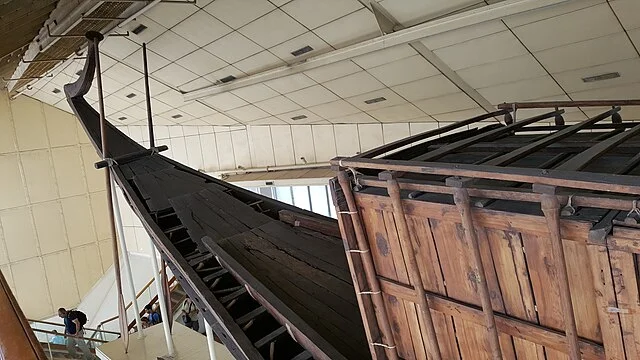
There is ongoing debate about the exact purpose of the Khufu ship. Many experts believe it was intended for use in the afterlife. In ancient Egyptian religious beliefs, boats played a central role in transporting the deceased across the sky with the sun god Ra. The ship may have been symbolic, meant to carry Pharaoh Khufu (Cheops) in his journey through the afterlife.
Others suggest the ship might have had a more practical function during Khufu’s lifetime. It could have been used for ceremonial purposes or to transport the pharaoh on pilgrimages along the Nile. However, no direct evidence supports that it was used in water before its burial.
Preservation and Display
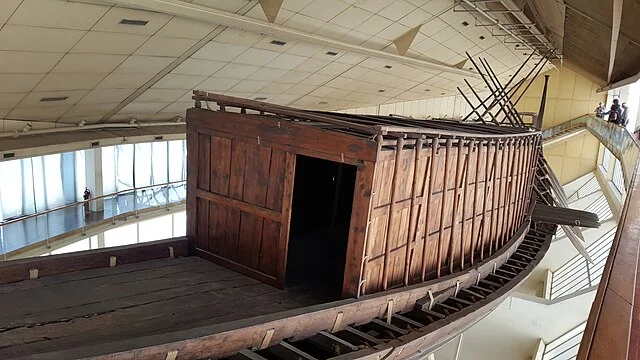
The Khufu ship has been preserved exceptionally well due to the dry conditions of its burial and the meticulous efforts of modern restorers. It is displayed in the Giza Solar Boat Museum, located near the pyramid complex. The museum, built in 1982, allows visitors to view the fully restored ship and learn more about its construction and significance.
In 2021, the Khufu ship was relocated to the new Grand Egyptian Museum, where it continues to be a central piece for both researchers and tourists. The museum provides modern conservation techniques to ensure the ship’s long-term preservation.
Significance of the Khufu Ship
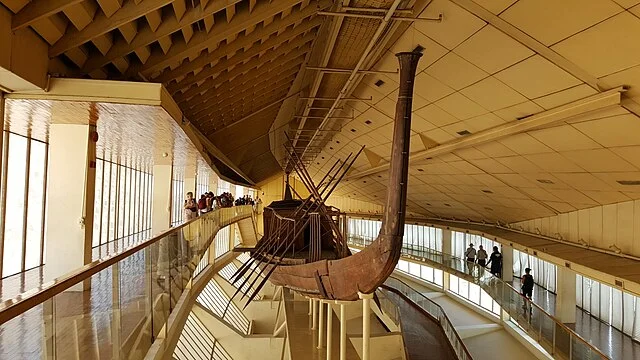
The discovery of the Khufu ship offers deep insights into ancient Egyptian society. The ship highlights the advanced technological skills of the Egyptians, particularly in shipbuilding. It also reinforces the centrality of boats in both everyday life and religious practices.
The ship is one of the oldest and best-preserved vessels from antiquity, making it an invaluable resource for studying ancient Egypt. Its preservation and public display continue to educate and inspire people around the world.
Source:

